“Storytelling is not just the ones we make up. It’s not fiction. It’s everything happening all around us.”
That’s what RYOT’s Gabe Lifton told a packed Edlis Neeson Theater as part of Chicago Ideas Week’s Future of Storytelling keynote event a few weeks back.
If there weren’t 10 rows of attendees between me and the stage, I might have rushed it to give him a hug of gratitude. Or at least a high five. Because it captured exactly the sentiment that made me hellbent on attending the session.
Storytelling lives at the absolute core of so much of our lives. And most of it doesn’t fit any mold that even comes close to “once upon a time.”
Look no further than the wide range of other Chicago Ideas Week sessions:
- Building a business that inspires people means entrepreneurs must become good storytellers to communicate their business’ purpose to the world.
- The analysis and discussion of our current political climate is a complex horse race of stories – both big and small – all competing for your attention and agreeance.
- Even the ways we reconcile the biggest questions life has to offer – like death and the afterlife – are shaped by the stories we’re told and the ones we decide to tell.
Storytelling is everywhere. It’s not just an entertainment tool. It’s not a widget. It’s the vehicle in which every piece of human communication rides in. We just don’t always think of it that way.
[bctt tweet=”Storytelling lives at the absolute core of so much of our lives.” username=”squareplanet”]
So as we look at one of humanity’s other favorite pastimes – predicting the future – the talk featured Diana Williams of Lucasfilm, RYOT’s Gabriel Lifton, author and designer Eli Horowitz, and Disney film producer Don Hahn. I loved the session so much I felt compelled to dive in and share what I learned. With that, this article will exist in two parts:
Part 1
A look at some of the fascinating new technologies being developed that will inevitably change aspects of how all stories are told.
Part 2
What each speaker during the Future of Storytelling event confirmed: Storytelling mediums will evolve, but the core traits that have allowed great storytelling to stand the test of time – those aren’t going anywhere.
This is part 1.
Cue the yellow upwards scrolling text…
Storytelling Episode VR/AR: A New Medium Awakens and Returns to Strike Back, We Hope.
Wait what?
The short of it is that clearly we’ve come a long way since the View-Master was our best bet for a ‘virtual reality’ experience that whisked our imaginations away to a lush jungle or deep sea adventure. More advanced VR experiences have continuously popped up in various iterations over the last 20-30 years, but never really delivered on the hype. How times have changed.

Virtual reality and augmented reality technologies have evolved to the point where their applications are seemingly endless. The U.S. Military relies on VR technology to train troops for hazards of battle. NASA uses virtual reality simulations so astronauts can explore what walking on Mars might really look, feel, sound and smell like. In the last year or two we’ve seen the release of products like the Oculus Rift and HTC Vive spark a flurry of new attempts to ride the technology to commercial success.
New gaming experiences are flooding the market. Samsung has pioneered the direct application of VR with Galaxy smartphones. The list goes on. It’s everywhere and showing no signs of slowing down.
[bctt tweet=”How can a company or person use #VR to better tell their stories?” username=”squareplanet”]
So what does this mean for the ways we experience our favorite visual stories – in film, television, and other video-based content? How can VR/AR engage all of our senses and actually transport us to fictional worlds? What about making very real stories hit closer to home? How will mass media and journalism be affected? How can a company or person use it to better tell their stories?
“It’s still the wagon’s west,” Diana Williams says.
A film producer by trade, Williams is now a Content Strategist for Lucasfilm Story Group, the people responsible for the development of the wide array of Star Wars stories that aren’t feature films. As Diana put it, “we want to make sure there are 40 more years of Star Wars.”
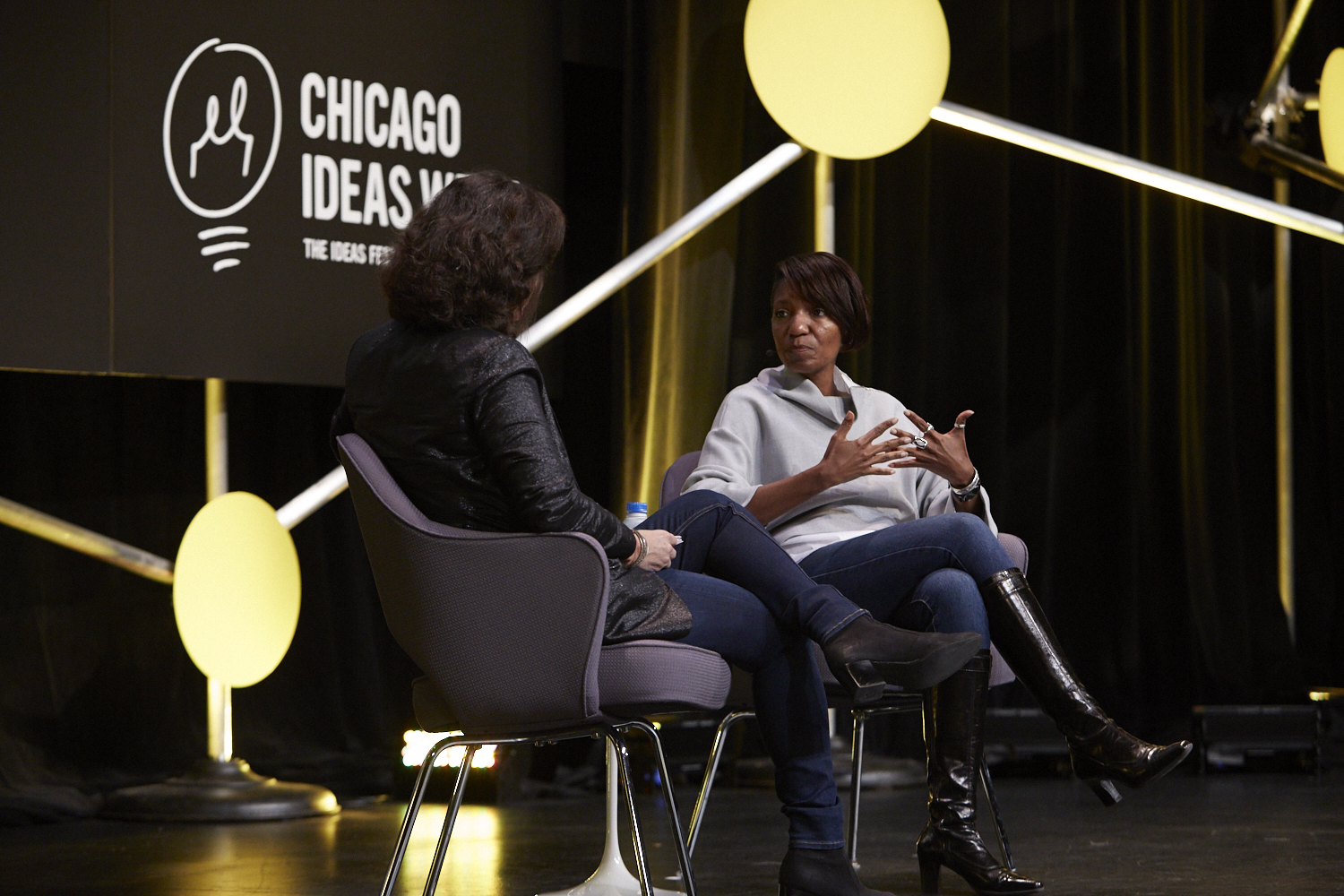
Diana WIlliams on Stage at “Future of Storytelling.” – Photo Courtesy Chicago Ideas
For Williams and the Lucasfilm Story Group, the implications of virtual and augmented reality present a host of challenges that are both thrilling and uncertain. Williams mentioned how the very nature of VR/AR’s ability to tap into the full human sensory experience means she and her colleagues are forced to address some seemingly fundamental questions to the Star Wars universe.
“What does a lightsaber actually feel and sound like? Can we capture it? How will that change the way the rest of the story is perceived on screen? What lines are now blurred between the active and passive methods of experiencing that story?”
Early releases of Star Wars VR experiences seem pretty damn close, but Williams insists the best is very much yet to come.
Not sure what the big deal is… 20 years ago all I needed was a broomstick and some carefully crafted verbal sound effects and I think my brothers and I had it pretty well down.
Diana, feel free to call for a consultation.
[bctt tweet=”Storytellers are gaining extraordinary new tools.” username=”squareplanet”]
The point is, in the film and entertainment business, storytellers are gaining extraordinary new tools. They just haven’t been mastered yet. But soon storytellers won’t be challenged with what their audience can imagine, but rather to find ways to directly engage the senses to create experiences nearly indistinguishable from their true reality.
Yikes.
So what about VR/AR’s impact on news media? How is it impacting the way we understand the world around us?
Show Don’t Tell
In addition to being the near target of my crowd-surf-hug that wasn’t, Gabe Lifton is also the COO of RYOT. Now a subsidiary of The Huffington Post, RYOT is a media and news company known for bringing some of the most prolific VR and 360 video experiences to both news and humanitarian advocacy.
As Lifton explained, RYOT had media outlets like The Huffington Post, NPR and The New York Times knocking on their door years ago because they saw the opportunity for VR and AR to be used to help people understand and interact with a very real – if still foreign – reality, rather than escape to an imaginary one.
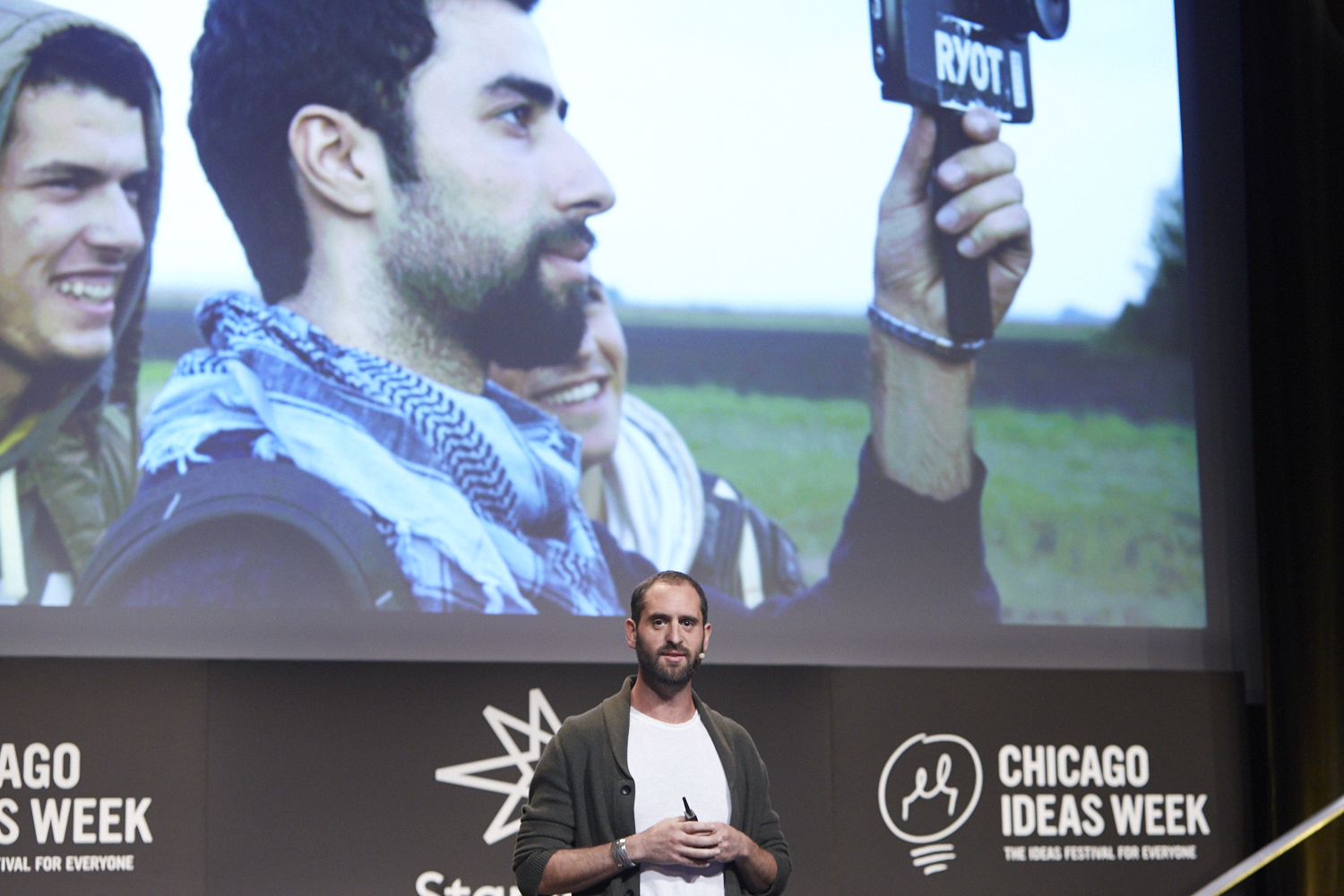
Gabe Lifton on Stage at “Future of Storytelling.” – Photo Courtesy Chicago Ideas
One of RYOT’s most notable early projects came via a 360º video experience that transported audiences to virtually stand at the wreckage of the devastating 2015 Nepalese earthquake. Audiences could look to their left to see and hear ambulances arriving; look to their right and see relief workers trying desperately to fight dust clouds as they unloaded supplies to tend to survivors. Our senses are captivated, our brains transported and according to RYOT co-founder David Darg, “You register VR as an experience you had, rather than something you see.”
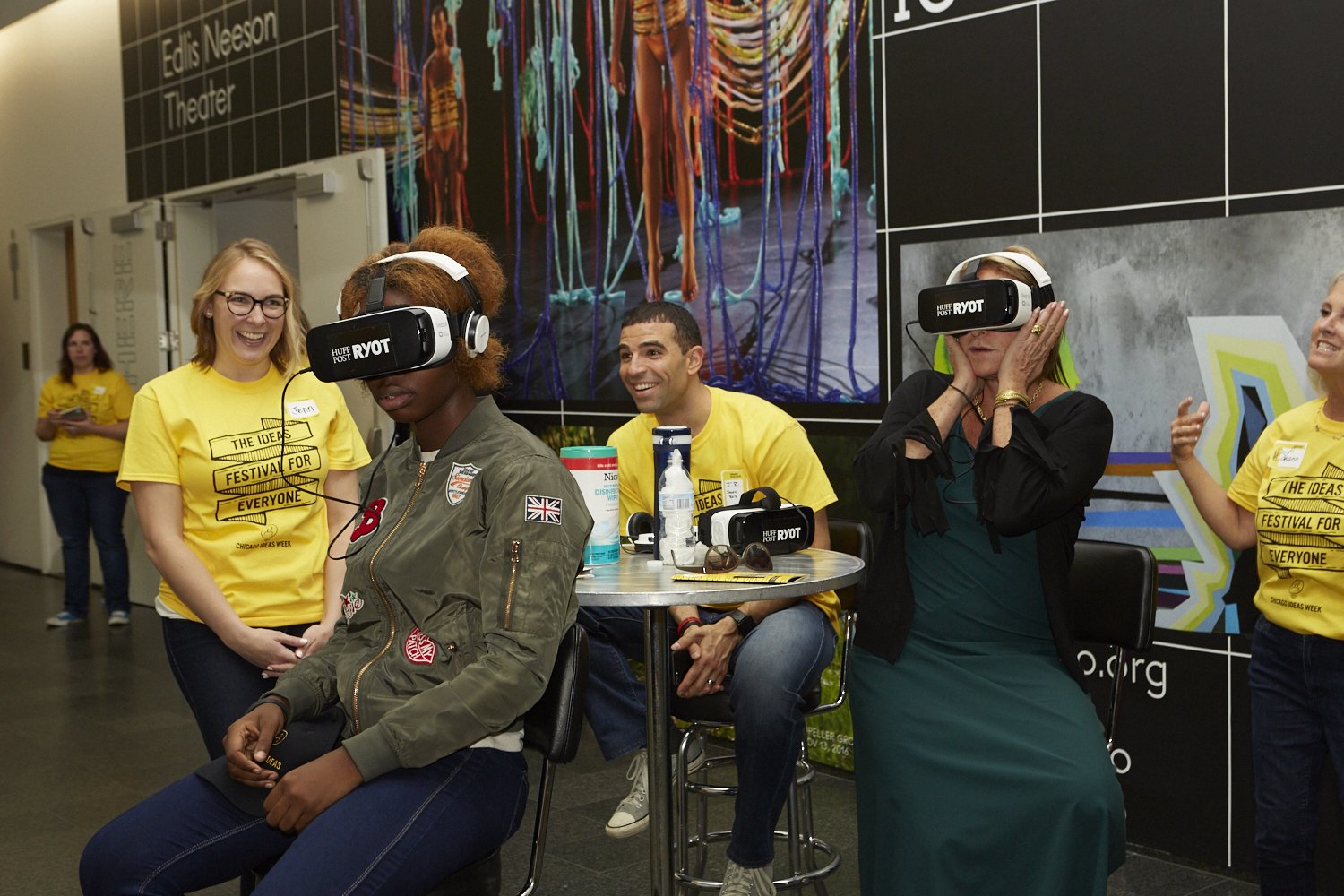
“Future of Storytelling” attendees test out RYOT’s VR Headsets. – Photo Courtesy Chicago Ideas
Lifton recounted example after example about how RYOT’s technology has been deployed to not just tell a story, but to show it. Everything they do is about inviting people into nearly-real sensory experiences to let the impact of a story really take root in an audience’s mind.
The bottom line for RYOT: it’s all about inspiring others to take action.
And as Lifton says, “Story HAS to be employed to advance any cause.”
Bottled at the Source: Changing Storytelling Mediums
Fear accompanies new technology like smoke to fire. It always has and it always will. No matter the industry or application, our fear of what new technology will bring is in our nature. Change is scary.
As storytelling mediums evolve with new technology, naturally people fear what might be lost – what old mediums will become obsolete and forgotten. Two of the session’s speakers offered particularly interesting takes on the evolution of storytelling mediums:
“It’s always been this way,” Disney’s Don Hahn says. “People thought that the advent of photography would kill painters. Degas learned to lean into it.”
Hahn is a decorated film producer whose resume includes The Lion King, Beauty and the Beast, and dozens of others. Hahn is also the author of Brain Storm: Unleashing Your Creative Self and regularly shares his countless nuggets of storytelling genius with audiences around the world.
As Hahn explained, artists like Edgar Degas would look at photographs as reference points and inspiration, rather than an enemy to compete with. The result? The birth of the Impressionist Movement. So much for obsolescence.
“It’s not a linear progression,” author and designer Eli Horowitz similarly argued. “Things don’t get replaced. The toolbox broadens.”
 Horowitz is the co-creator of works including The Silent History, The Pickle Index and Everything You Know is Pong – three digital and physical works of storytelling that are as fascinating as they are difficult to define. Even for Horowitz himself.
Horowitz is the co-creator of works including The Silent History, The Pickle Index and Everything You Know is Pong – three digital and physical works of storytelling that are as fascinating as they are difficult to define. Even for Horowitz himself.
After being asked to give a brief elevator pitch about himself and his work, Horowitz struggled briefly before candidly telling the audience, “This is why I avoid elevators.”
His unique ability to use different mediums to put simple but profound twists on stories is wonderfully demonstrated in his most recent work The Pickle Index. By Horowitz and co-creator Russell Quinn’s own account, the story’s simplest description reads as “a dysfunctional circus attempting an unlikely prison break.” Although, from what others have written, that seems to be selling its strange charm short.
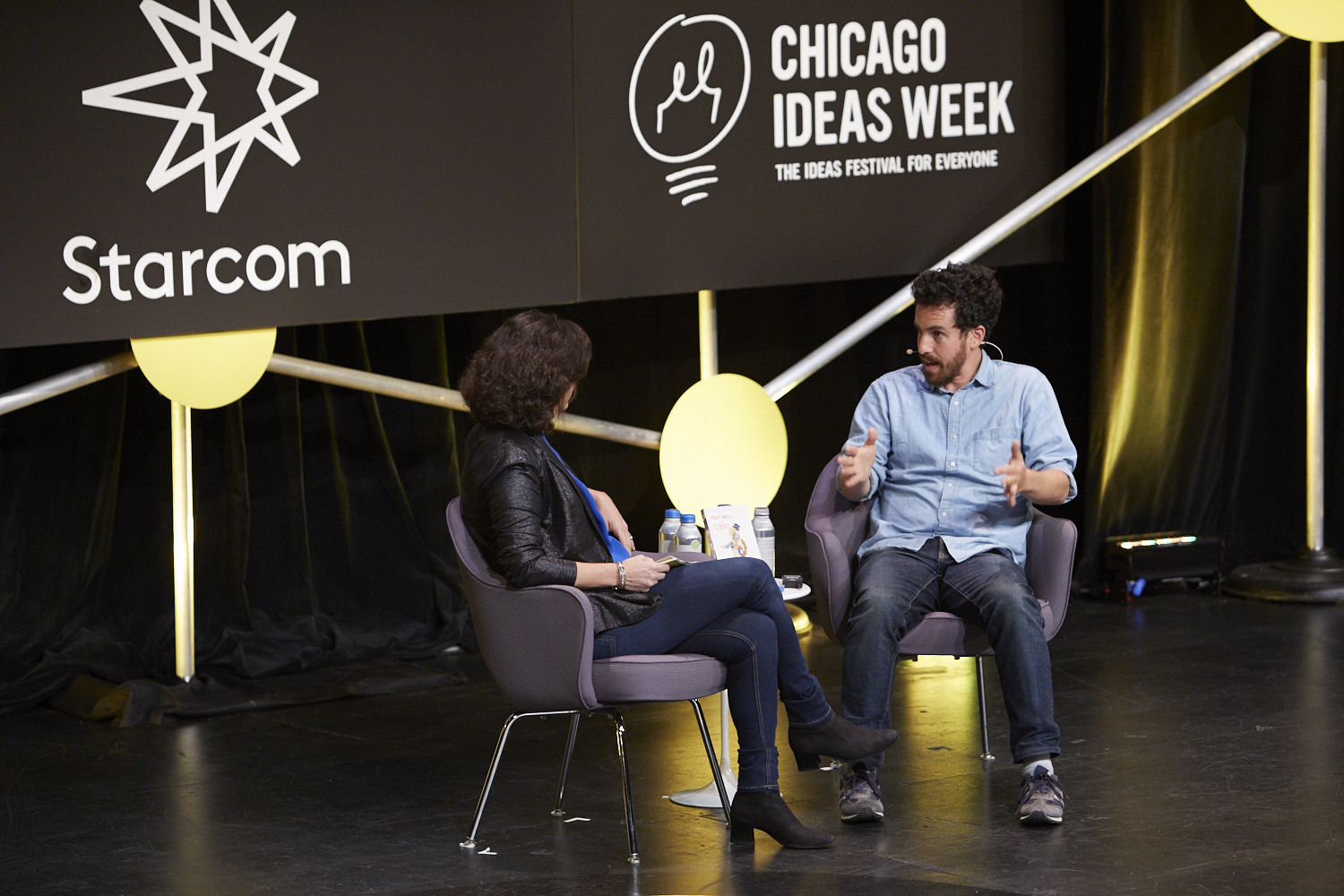
Eli Hotowitz on Stage at “Future of Storytelling.” – Photo Courtesy Chicago Ideas
Because what’s perhaps more remarkable than the story itself is how it’s told. The Pickle Index is published in three formats: An illustrated double-hardcover book, an immersive app for iPhone/iPad, and a text-only paperback. Each is designed to stand entirely on its own, with intriguing alterations tilted towards each specific medium.
As Horowitz explained, “It’s all about even the simplest truths about what that medium can do. A book allows you to physically feel when the end is near based on remaining pages. A phone or tablet can’t do that. But a phone or tablet does know what the date is. And what time it is. And exactly where you are.”
To see how Horowitz and Quinn brilliantly seize each of those opportunities, check out more about The Pickle Index. My illustrated hardcover is already in the mail.

Above all, shifting storytelling mediums has one dramatic and polarizing effect: the sources of those stories change dramatically.
“The question of ‘who gets to tell stories?’ is already a dominant one,” Lifton says.
You don’t have to look much further than your Facebook News Feed to witness the negative side effects of broadening storytelling platforms. Everyone’s an expert, echo-chamber outrage floats to the top, and the truth often gets buried in photos of your cousin’s baby and “What type of Starbucks drink are YOU?” quizzes.
That’s the bad stuff.
Lifton argued for a much more positive effect of new media technology. When we can make a story’s subject and source one in the same, we get the noise out of the way. Eliminate a news outlet’s inherent filter. Eliminate the telephone effect.
From pipeline protests in America to war-torn refugees in Syria, RYOT’s “Become the Story” mantra means they use 360º video, VR/AR and Facebook Live to capture what they believe to be the most critical part of any story: the raw and unedited truth. Straight from the source.
Because all of it, as Lifton explained, is about getting to the heart of things. “Just the facts will always feel incomplete without a human component.”
So what?
Why is it all worth taking note of? How does this affect the broader spectrum of our lives? What does it mean for the business world?
In short, it comes down to competition. And not competition between industry leaders for market share, but competition among people and brands over one coveted commodity: your attention. The race for your eyeballs is already at a frantic pace. And soon, that won’t just be a race for eyeballs.
It will be a race for the other four sources of your sensory experience. So with any message you put out to the world, any story you tell – the rules to the game are getting an update.
[bctt tweet=”At the center of every type of story is a human audience.” username=”squareplanet”]
But there’s a wonderful truth to keep in mind: much of the game will never change. No matter what the type of story – in film, politics, news media, business, anything – at the center of it all is a human audience. And as Don Hahn so brilliantly explained, the mediums of a story will surely take new forms, but the methods that make a good one – those never will.
In part two of this piece next week, I’ll write about what this session’s panel of speakers believe are the absolute keys to great storytelling and why that playbook can never be thrown out.
Because as Hahn put it, “The future of storytelling is the past of storytelling.”
[x_callout type=”left” title=”Chime In” message=”How do you feel about the influence from technology on storytelling? Love it? Hate it? We want to hear your opinion!” button_text=”Share Below In the Comments” button_icon=”commenting” href=”#comments” target=”blank”]
[x_author title=”Who wrote this masterpiece?”]
[x_recent_posts type=”post” count=”3″ section=”featured” orientation=”horizontal” fade=”true”]

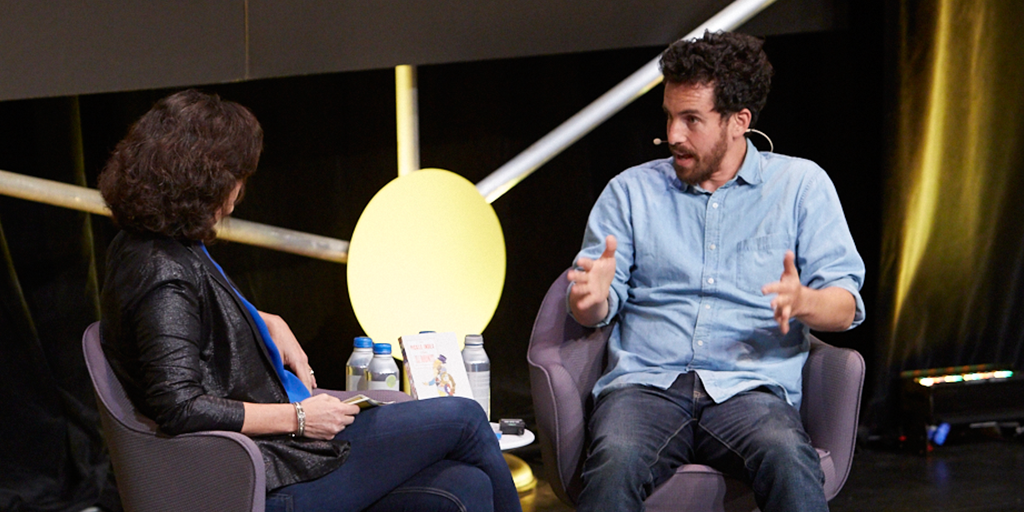



0 Comments